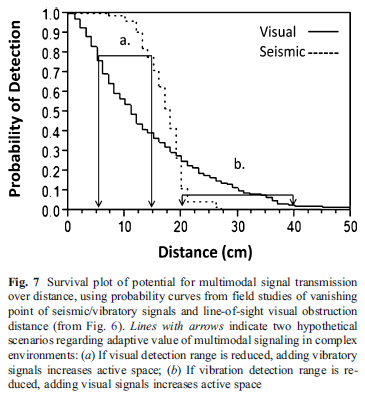
by Shira | Mar 14, 2013
Abstract Multimodal signals may compensate for environmental constraints on communication, as signals in different modalities vary in efficacy. We examined the influence of complex microhabitats on transmission of vibratory and visual signals of courting male...

by Shira | Mar 15, 2012
Sound is abundant in the environment, often creating ‘‘noise’’ that interferes with animal communication. Animals cope with acoustic interference in a variety of ways, including raising their signal volume (the Lombard effect), changing the pattern, frequency or...





Recent Comments